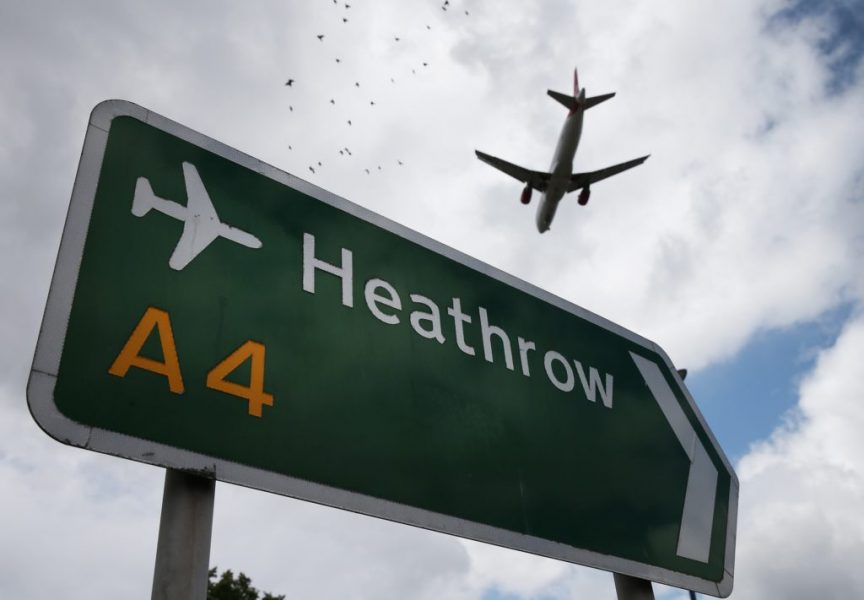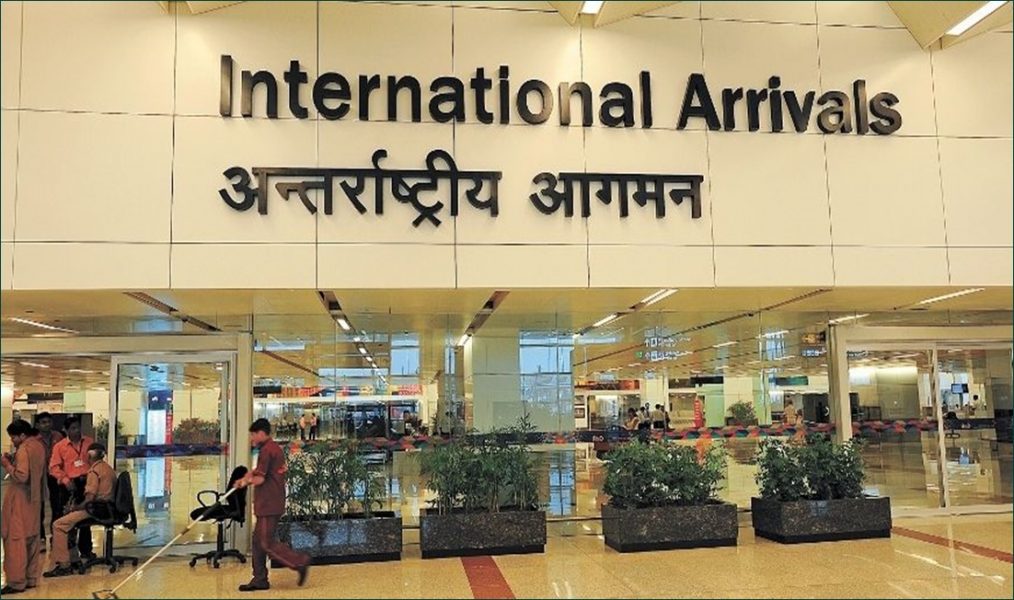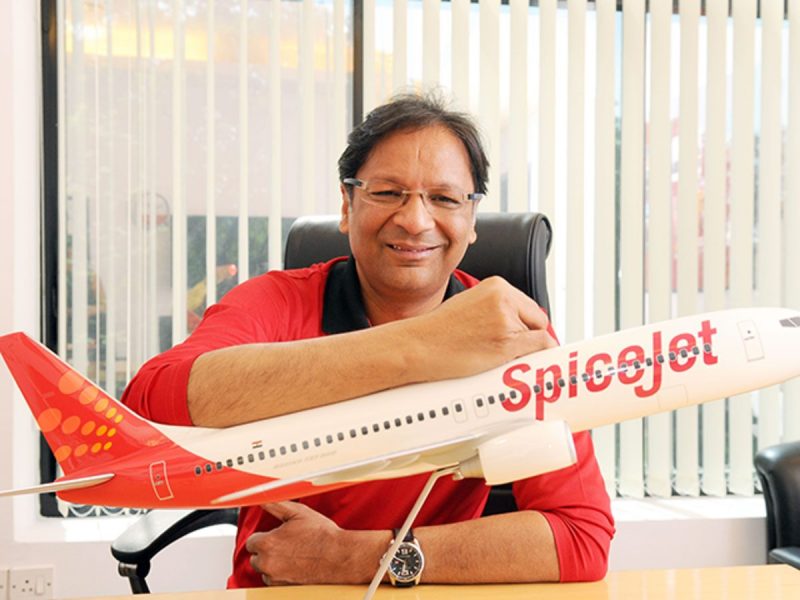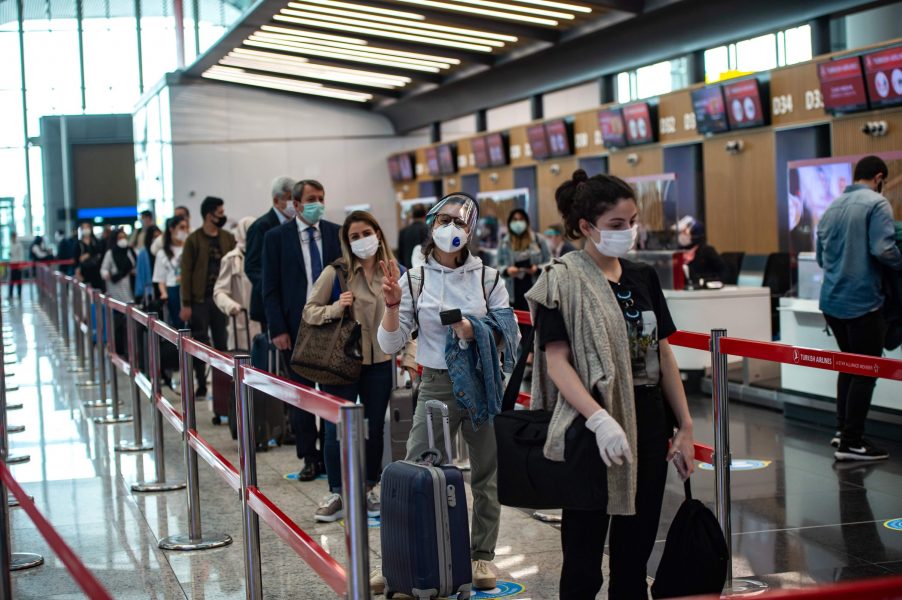Quarantine not required for fully vaccinated Indians travelling to the UK
Radhika Bansal
08 Oct 2021

The UK government added India to its list of vaccine-eligible countries on Thursday, October 7, meaning that fully vaccinated Indians will no longer be required to quarantine upon arrival starting October 11.
"No quarantine for Indian travellers to the UK fully vaccinated with Covishield or another UK-approved vaccine from 11 October. Thanks to the Indian government for close cooperation over last month," tweeted British High Commissioner to India Alex Ellis.
https://twitter.com/AlexWEllis/status/1446154479481462795
From October 11, Indian visitors who have received both doses of Covishield or another UK-approved vaccine at least 14 days before arrival in the UK will be exempt from quarantine and will not be required to take a pre-departure test or a day 8 test upon arrival.
Those who have not been fully vaccinated with one of the four UK-approved vaccines (Oxford/AstraZeneca, Pfizer BioNTech, Moderna, Janssen) or any formulation of these vaccines, including Covishield, must take a pre-departure test, a COVID-19 test on or before day 2 and on or after day 8, and self-isolate for ten days. Under the Test to Release service, travellers can reduce their home quarantine to around five days.
(Image Courtesy - The New Indian Express)
Eligible travellers vaccinated in over 37 new countries, including India and Pakistan, will be treated the same as returning fully vaccinated UK residents, so long as they have not visited a red list country or territory in the 10 days before arriving in England, the Department for Transport said.
"The measures announced today mark the next step as we continue to open up travel and provide stability for passengers and industry while remaining on track to keep travel open for good," tweeted UK Transport minister Grant Shapps.
https://twitter.com/grantshapps/status/1446149138979110921
From October 11, the United Kingdom will recognise India's vaccine certification system, allowing for more international travel. According to a spokesperson for the British High Commission in India, the decision was reached after close technical cooperation between our ministries and consideration of public health factors.
According to the spokesperson, the extension of vaccine certification is another step toward allowing people to travel more freely, safely, and sustainably while protecting public health.
"The UK is continuing to work on expanding the policy to countries and territories across the globe in a phased approach. We are continuing to engage with the Government of India on technical cooperation to expand UK recognition of vaccine certification to people vaccinated by a relevant public health body in India,” Spokesperson, The British High Commission
(Image Courtesy - Migrant News)
In particular, a diplomatic spat erupted between India and the United Kingdom after the latter announced last month that all Indian travellers, regardless of vaccination status, would be considered unvaccinated and subjected to a 10-day mandatory quarantine.
Over the last few weeks, the two governments' diplomats and health officials have been in contact to address the British government's concerns about some aspects of the certificates issued through the CoWIN app to people who have been vaccinated with the Covishield Covid-19 vaccines. One of London's concerns was addressed when the Indian government made arrangements for the certificates to show the full dates of birth of the vaccinated beneficiaries.
HV Shringla, India's Foreign Secretary, had slammed the UK's new rules, pointing out that the Covishield vaccine, which India has given to the majority of its citizens, is the same AstraZeneca vaccine that has been included in the UK's mass vaccination campaign.
(Image Courtesy - India Today)
Following New Delhi's protest, the United Kingdom announced on September 22 that Covishield had been added to the list of approved vaccines. India, on the other hand, was still placed on the strict amber list of travel guidelines, making quarantine mandatory for visitors arriving from the country.
The United Kingdom categorises countries as red, amber, or green, and applies quarantine and COVID-19 testing standards accordingly.
Even if people are fully vaccinated, they must take a COVID-19 test before travelling to the UK if they are on the amber list. They must also go through mandatory quarantine when they arrive.
With the UK now easing the norms for vaccinated Indians, India is expected to reciprocate and roll back the stringent curbs that were announced for all British travellers.
Cover Image - PBS
Read next
India decides to allow international travellers by granting tourist visas
Radhika Bansal
08 Oct 2021

The government has decided to lift the Covid barrier for international travellers by resuming the grant of tourist visas to boost the economy through tourism.
On November 15, the Ministry of External Affairs will begin issuing new tourist visas to foreigners visiting India. Visas would be issued to those arriving on chartered flights beginning October 15.
https://twitter.com/tourismgoi/status/1446094424732176387
The move comes a year and a half after the grant of tourist visas were suspended in the wake of the Covid pandemic.
Under the air bubble agreement, commercial airlines from specific countries are allowed to travel to and from India on a limited basis.
“After considering various inputs, the MHA (Ministry of Home Affairs) has decided to begin granting of fresh tourist visas for foreigners coming to India through chartered flights with effect from October 15, 2021. Foreign tourists entering India by flights other than chartered aircraft would be able to do so only with effect from November 15, 2021 on fresh tourist visas. All due protocols and norms relating to COVID-19 as notified by the Ministry of Health and Family Welfare from time to time shall be adhered to by the foreign tourists, carriers bringing them into India and all other stakeholders at landing stations."Ministry of Home Affairs
The ministry said in a statement that the decision was taken following consultations with stakeholders like the Ministry of Health & Family Welfare, Ministry of External Affairs, Ministry of Civil Aviation, Ministry of Tourism and state governments.
"MHA had been receiving representations from several State Governments as well as various stakeholders in the tourism sector to start Tourist Visas also, to allow foreign tourists to come to India. After deliberations we have decided to ease travel restrictions," a senior Home Ministry official said
The official said states have been asked to follow Covid protocols laid down by the Ministry of Health and Family Welfare and the tourists, the carriers bringing them into the country and other stakeholders must also stick to the guidelines.
The Home Ministry had been receiving representations from several state governments as well as various stakeholders in the tourism sector to start tourist visas also to allow foreign tourists to come to India.
https://twitter.com/PIBHomeAffairs/status/1446087433020268546
In the aftermath of the pandemic last year, all visas for foreigners were suspended. After taking into account the changing situation, the government decided to allow foreigners to enter and stay in India on any type of visa other than a tourist visa.
Even though about 20,000 new cases are reported every day, the country's Covid-19 graph is plateauing, according to the centre on Thursday, October 7. It warned people not to let their guard down during the holiday season because the Covid-19 challenge was still ongoing.
(Image Courtesy - India Today)
Travel has been one of the pandemic's worst victims. As a result of the coronavirus pandemic, the Federation of Associations in Indian Tourism & Hospitality (FAITH), an apex body of the Indian tourism industry, warned in March — just before the second wave — that nearly 70% of the country's estimated 5.5 crores (direct and indirect jobs) in the sector could become unemployed — about 3.8 crore people. According to the report, the Indian tourism industry is facing bankruptcy, business closures, and mass unemployment.
The direct tourism industry, worth over INR 5 lakh crores and accounting for nearly a quarter of total economic activity, is in jeopardy, according to the report. Domestic tourism, which has seen a significant rebound since the end of the deadly second wave, is almost entirely reliant on domestic visitors.
Earlier on Wednesday, September 22, the Ministry of Home Affairs (MHA) official also confirmed that the Central government is considering to resume issuing tourist visas very soon In a bid to boost the economy as daily COVID-19 cases in the country have come down.
Read next
If there's one thing that can't be stopped, it is the evolution of technology. The current global scenario has only pushed the industry further to find better and efficient ways of getting things done.Today, when you look at it, cloud computing has become as common as a child using Excel spreadsheet in high school. The developers behind this technology have been making leaps and bounds for airlines and airports to ramp up cloud usage across the globe.
Getting started
Uniting Aviation
Safety is paramount in the aviation sector. The maturation of cloud technology has allowed organisations to safely implement modern systems efficiently and securely.For instance, it was just a few days back that Honeywell Aerospace introduced "Anthem"- a cloud-connected cockpit system, the first of its kind in aviation.
Cloud computing has been assisting carriers launch new routes swiftly. Although it is the major hubs that have progressed much with cloud technology, the small and medium-sized airports have the same needs as well- notes SITA ( Société Internationale de Télécommunications Aéronautiques) -the leading specialist in air transport communications and information technology. Elevated passenger requirements and the increasing dependence of airlines on digitization has pushed cloud technology to be scaled up on a rapid level.
Airports now deploy “shared common-use approaches” reasonably while cutting down on space, maintenance, and infrastructure. Check-in, bag drop, and off-airport processing are some departments that make use of this innovative technology.
In the current unprecedented times, improvisation and adapting is the only way forward. The pandemic has brought along with it a set of challenges and hence the industry is now leaning on cloud computing to overcome those.
COVID has accelerated an existing trend towards automation of the passenger journey, where your mobile is your remote control for travel and your face acts as your boarding card. Smart Path, together with SITA Flex, enable that experience. SITA Smart Path is a suite of integrated biometric and cloud-enabled solutions designed to enable a low-touch airport experience for greater efficiency and improved passenger satisfaction, allowing passengers to interact with all airport touchpoints via their mobile devicesSergio Colella, SITA President Europe
What is cloud technology?
The best part about this is its ability to integrate easily into current environments. Cloud computing is the on-demand availability of computer system resources without the direct management by the user. This saves costs, speeds up processes, all while increasing reliability, mobility, scalability, and security.
1.Rome Fiumicino Airport uses Smart Path technology and allows aircraft boarding using your biometric.
Contactless Baggage-Drop | BEUMER group
2. Beijing Capital International Airport uses the same technology to speed up passenger processing- 400 passengers can now board an A380 in less than 20 minutes.
Contactless boarding | Airport Technology
3."Smart path" has also improved passenger experience at duty free shopping. Guests now have to just scan their face rather than fumble with their boarding passes.
Biometric face scan | The Economist
Modern platforms enable real-time, reliable collaboration at scale in a cloud-based environment. Thereby, more airports, now more than ever, are embracing cloud and the re-use of it.
With safety and security at the centre of operations in the current scenario stakeholders in the aviation industry will undoubtedly be keen to keep the momentum going with cloud utilization. And rightly so.
Furthermore, SITA also underscores the fact its various cloud platforms meet the requirements for operations at the airport and for the aircraft to be more price-sensitive, responsive, and resilient.
The industry is now slowly reeling back to recovery and cloud computing could well play a huge part in its recovery and subsequent growth.
What do you think of the rapidly emerging cloud technology that is taking over the aviation industry? Drop in your thoughts below.
COVER: Aurelius Corporate Solutions
Read next
Alliance Air will begin operating on the Kolkata-Guwahati-Aizawl-Shillong sector on October 18, according to a state official on Thursday, October 7.In the state's north-eastern region, two other airlines are currently in operation.
From October 18, Mizoram's principal civil aviation consultant, Wing Commander J Lalhmingliana, said Alliance Air would operate an ATR-72 aircraft four days a week.
(Image courtesy - Facebook)
The service will run on Mondays, Tuesdays, Thursdays, and Saturdays on the Kolkata-Guwahati-Aizawl-Shillong route, and booking will begin on October 11.
Air India and IndiGo, according to Lalhmingliana, currently operate in the state.
IndiGO flies an Airbus A320 on the Delhi-Aizawl and Bangalore-Guwahati-Aizawl sectors six days a week, while Air India operates an Airbus A319 on the Kolkata-Guwahati-Aizawl-Imphal sector four days a week, he said.
From November, he said, the state might get another air service on the Aizawl-Agartala route.
(Image Courtesy - Air India)
Airline Allied Services Limited, operating as Alliance Air, is a wholly-owned subsidiary of Air India. The carrier commenced service operations on April 1996, delivering flights to Tier-2 and Tier-3 destinations from base stations at Delhi, Mumbai, Bengaluru, Kolkata, Hyderabad & Bhopal.
Alliance Air also provides chartered services to International destinations through its hubs. Alliance Air is the launch carrier of India's Regional Connectivity Scheme, also known as Ude Desh Ka Aam Naagrik, with the commencement of the Shimla-Delhi service in April 2017.
Recently, Disinvestment-bound Air India’s regional arm Alliance Air announced that it will begin operating daily direct flights from Mumbai to the newly constructed Sindhudurg Airport on October 9.
Cover Image - Airliners.net
Read next
Chairman of SpiceJet Ltd. Ajay Singh wants to expand the company's fleet of passenger jets and cargo hauliers as the Indian airline's financial performance improve after a difficult period during the pandemic.
Due to a combination of cost cuts, renegotiated aircraft leases, an increase in air travel traffic in India, and the growth of the company's new cargo operation, Singh believes the no-frills carrier has a "reasonable chance" of breaking even this quarter through December.
(Image Courtesy - India TV News)
“We are easily the largest player in that space in our part of the world,” he said in an interview at an annual International Air Transport Association meeting in Boston. “We, like other airlines, made losses in this period but on the other side we built out this asset.”
SpiceJet lost INR 7.3 billion ($98 million) in the June quarter, falling short of analyst expectations of an INR 6.3 billion loss. After the company deferred pay for much of this year, a move that prompted a strike at Delhi airport in September, Singh said that all employees' salaries have now been restored.
SpiceJet rose 1% Tuesday morning in Mumbai. The shares are down 20% this year.
SpiceJet's cargo business, according to Singh, will generate $1 billion in revenue in two to three years, up from $350 million this year. He estimates that the company will need "at least" 10-15 more wide-body jets to expand capacity beyond its current fleet of nine, with the first additions arriving as soon as next month.
(Image Courtesy - Jharsuguda Live)
Singh said he wants to add another 30-40 passenger planes to SpiceJet's fleet in the next two years, on top of the 155 Boeing 737 Max planes already on order. After a lengthy grounding following deadly crashes in Indonesia and Ethiopia, Indian regulators cleared the Max to fly again in August.
SpiceJet will resume flights on the Max on October 8 and hopes to reach an agreement with Boeing "very soon" over costs incurred while the plane was grounded, according to Singh. He remained tight-lipped about the specifics of a possible compensation deal with Boeing.
“SpiceJet will definitely need capacity because a lot of our old aircraft are slated for lease returns over the next year,” he said. “In any case, SpiceJet’s strategy always was to convert to newer aircraft, more fuel-efficient aircraft, and try to offer a better product to consumers.”
At Kolkata airport, a SpiceJet Boeing B-737 MAX 8 aircraft racked up a parking fee of INR 5.5 crore. For the past 30 months, VT-MXA has been stationed at the Kolkata airport.
The SpiceJet aircraft delivered to the airline in Kolkata on November 2, 2018, was only four months old before it was grounded worldwide due to two crashes.
Recently, SpiceJet and the online travel portal EaseMyTrip have teamed up to offer travellers a customised experience for holiday bookings for the upcoming season. Under this partnership, EaseMyTrip will offer customers a booking platform to SpiceJet.
(Inputs from Ryan Beene - Bloomberg Quint)
Cover Image - The Economic Times
Read next
In September, India's domestic air passenger traffic increased by 2-3% to around 69 lakh, up from around 67 lakh in August, according to credit rating agency ICRA in a statement released on Wednesday, October 6.
In September 2021, the local carrier had 54% more capacity than the same month the previous year.
It said that y-o-y, air passenger traffic growth in the month under review was around 74% higher than September 2020.
"For September 2021, average daily departures were at around 2,100, significantly higher than the average daily departures of around 1,321 in September 2020, and higher than around 1,900 in August 2021, though they remained lower than around 2,200 in January 2021.The average number of passengers per flight during September was 113, against an average of 117 passengers per flight in August. Though the recovery continued in September, demand continues to be subdued from the corporate traveller segment as reflected by passenger traffic being lower by around 38% in September compared to pre-Covid levels."Suprio Banerjee, Vice President and Sector Head, ICRA
It said that airlines saw around 61,100 departures in September, compared to 39,628 departures in the same month of 2020, and that the number of departures in the previous month was up by around 6% sequentially, as Covid-19 infections showed a downward trend.
Due to the resurgence of the second wave of the pandemic, the Civil Aviation Ministry reduced the permissible capacity deployment to 50% of pre-Covid levels, effective June 1. With effect from August 12, it increased this capacity to 72.5%, which has now been increased to 85% with effect from September 18 until further orders.
(Image Courtesy - Today Show)
Additionally, effective September 18, the ministry relaxed the fare cap rule wherein the fare caps in each of the bands will be applicable up to the next only 15 days on a rolling basis, implying that the minimum and maximum fare chargeable will continue to be rolled over for the next 15 days cycle compared to 30 days earlier.
However, ICRA continues to maintain a negative outlook on the Indian aviation industry. It conveyed that the financial performance of the Indian airlines is likely to remain weak as material recovery in passenger traffic to pre-Covid-19 levels is unlikely in the near term. This is due to continued restrictions on international travel and subdued demand from the corporate traveller segment.
(Image Courtesy - The Economic Times)
Given the onset of the festive season, ICRA believes that the increase in permitted capacity to 85% levels is a step in the right direction. The reduction in the fare cap rollover period from 30 to 15 days is also a move toward market-driven pricing, as it was before Covid, when pricing was determined by actual demand-supply dynamics and real passenger load factors, according to the statement.
ICRA said that aviation turbine fuel (ATF) prices have seen a sharp increase of 78.6% on a Y-o-Y basis till October 2021, attributed to increasing in crude oil prices, coupled with low capacity utilisation of aircraft fleet will continue to weigh on the financial performance of Indian carriers in FY'2022.
Furthermore, the credit profile of most Indian carriers continues to be characterised by a weak liquidity position, it added.
In July, domestic air passenger traffic jumped 57% to around 49 lakh.
(With Inputs from PTI)
Cover Image - Daily Sabah





Comment